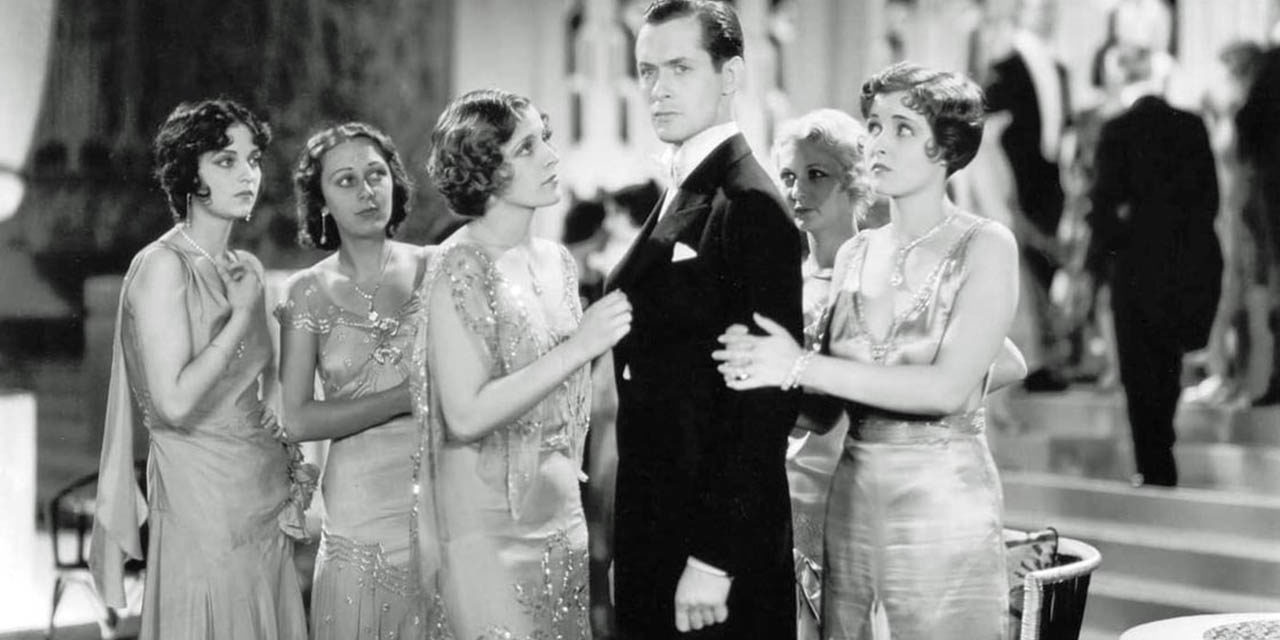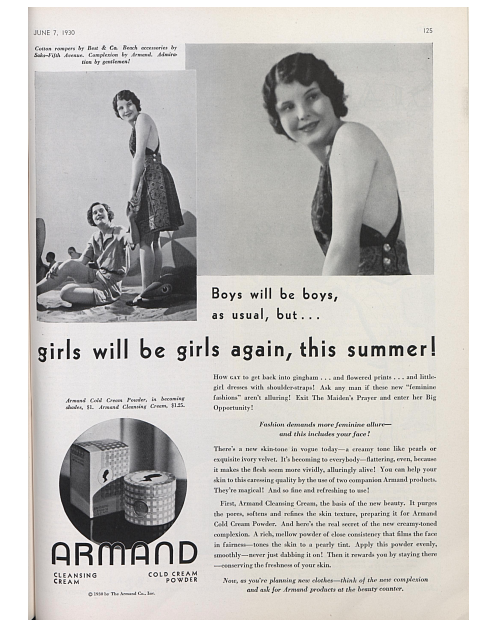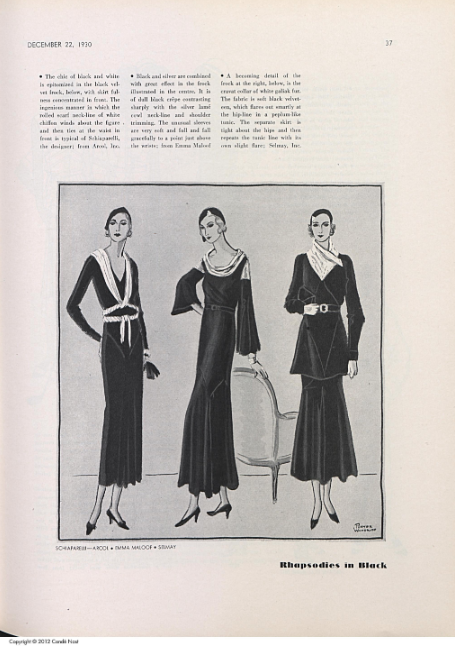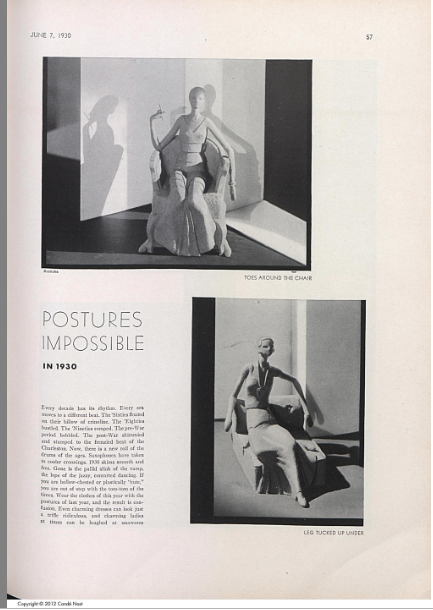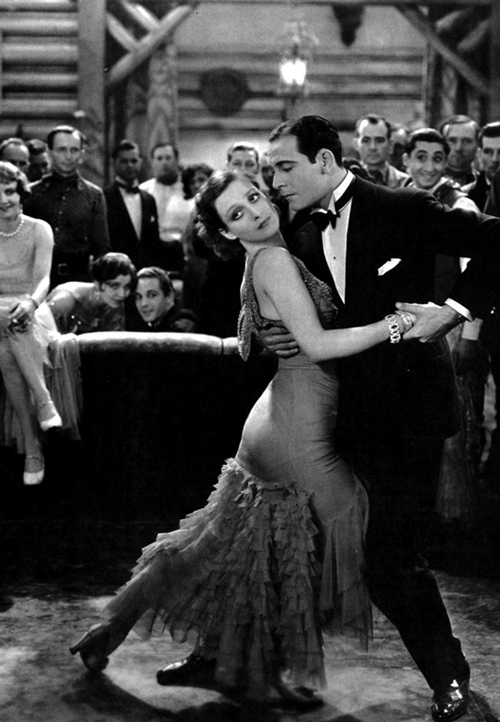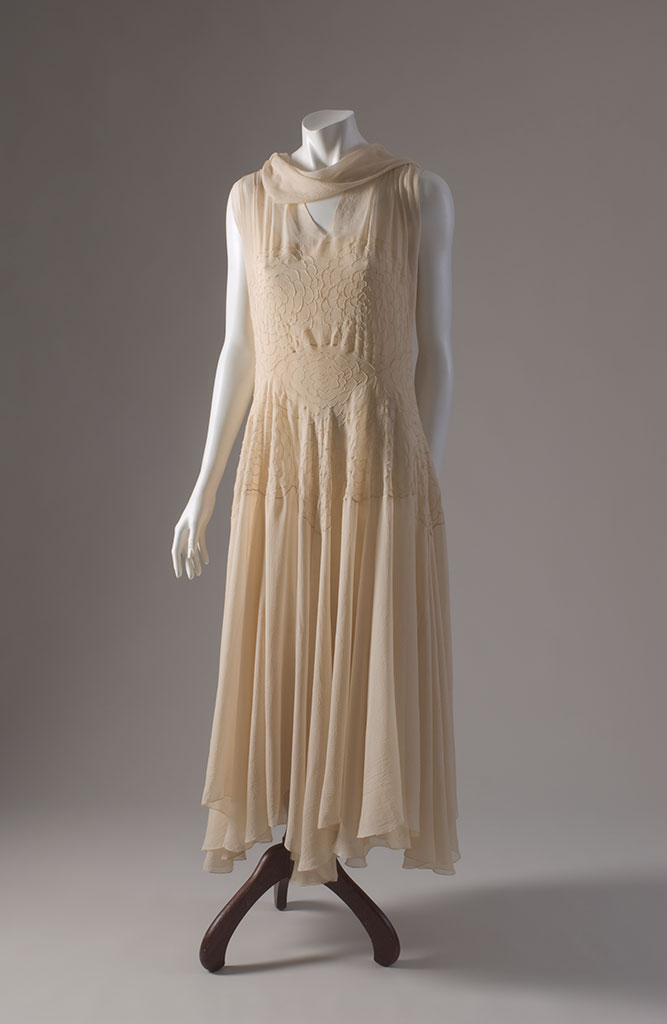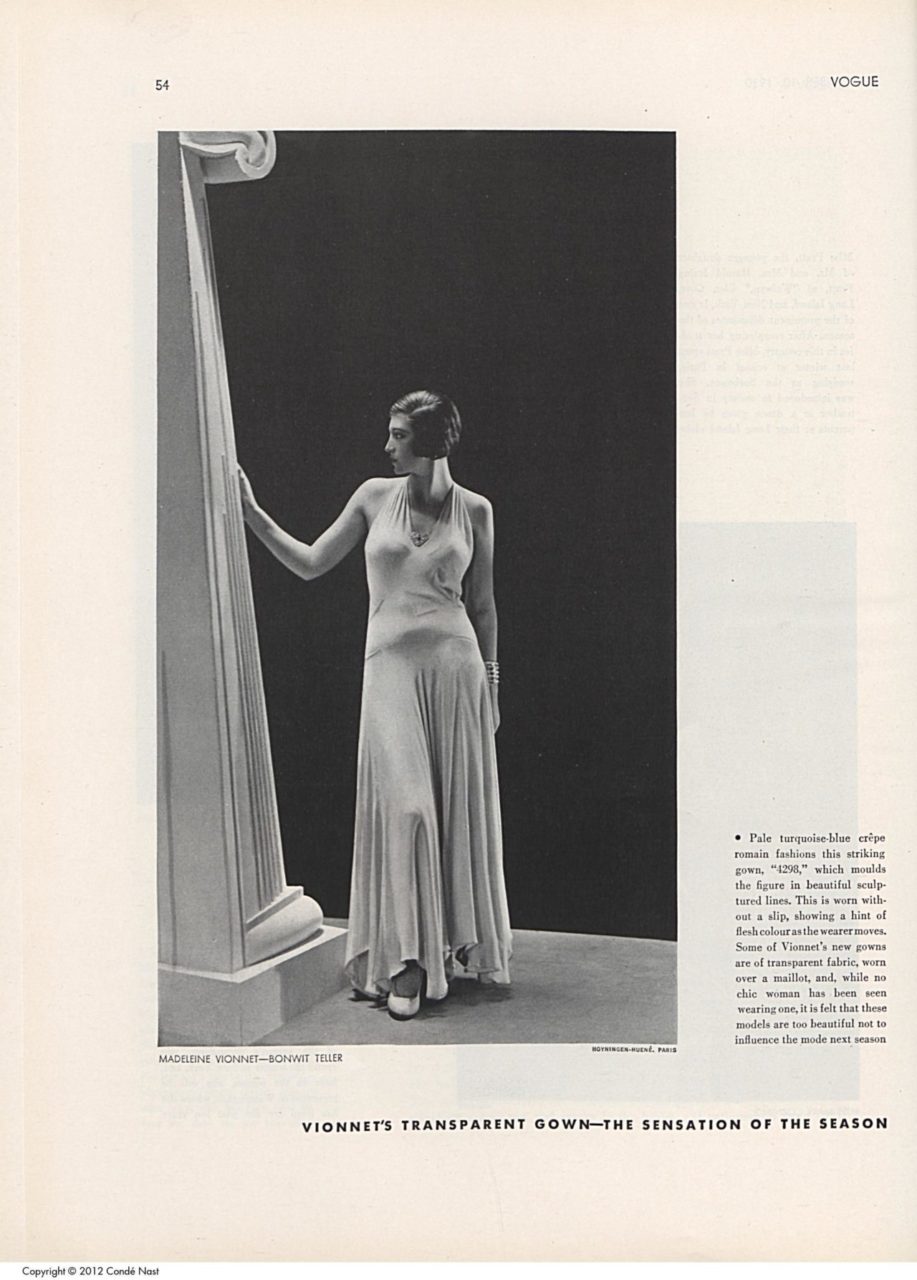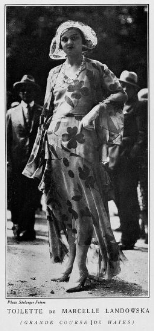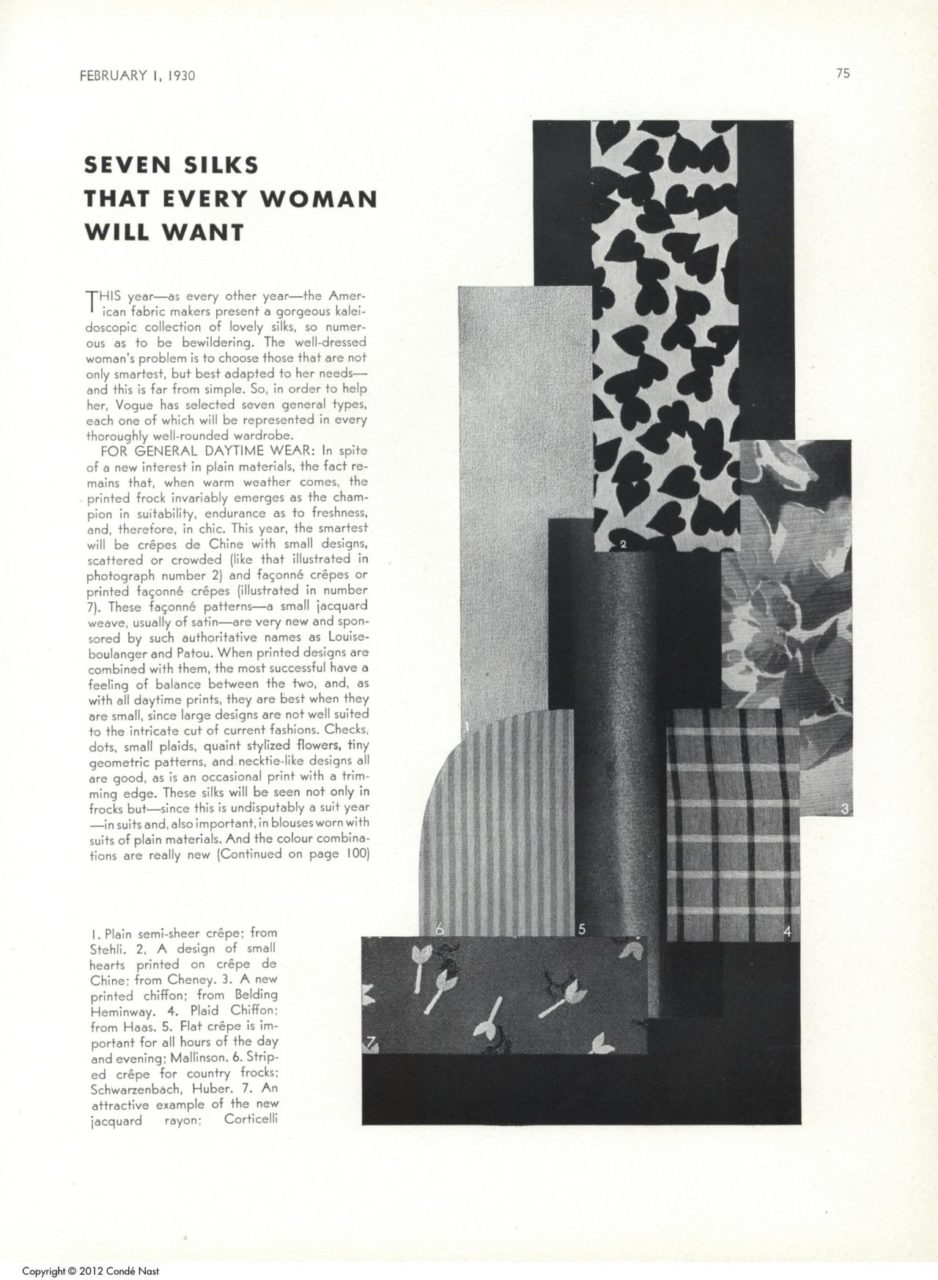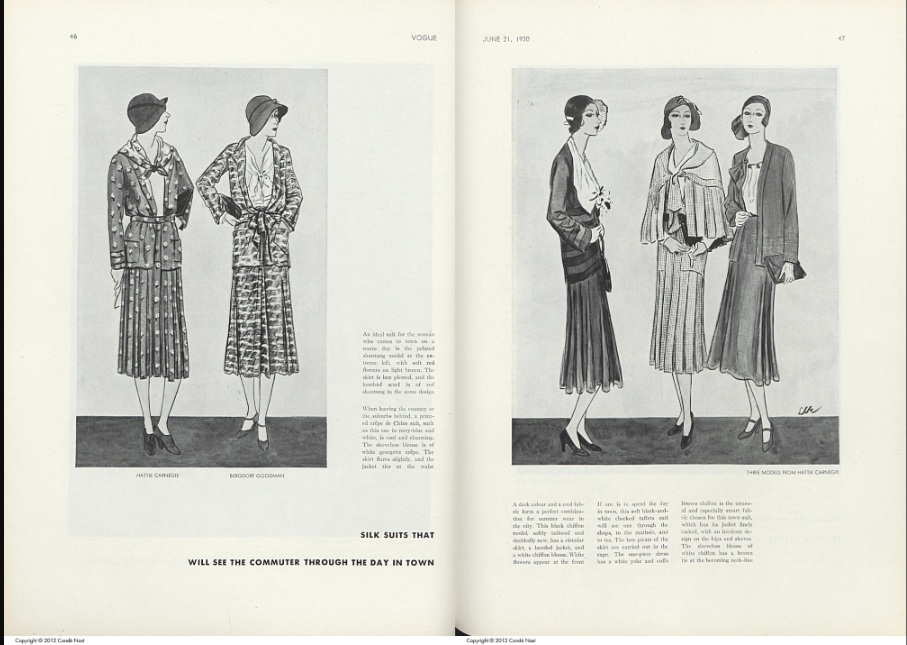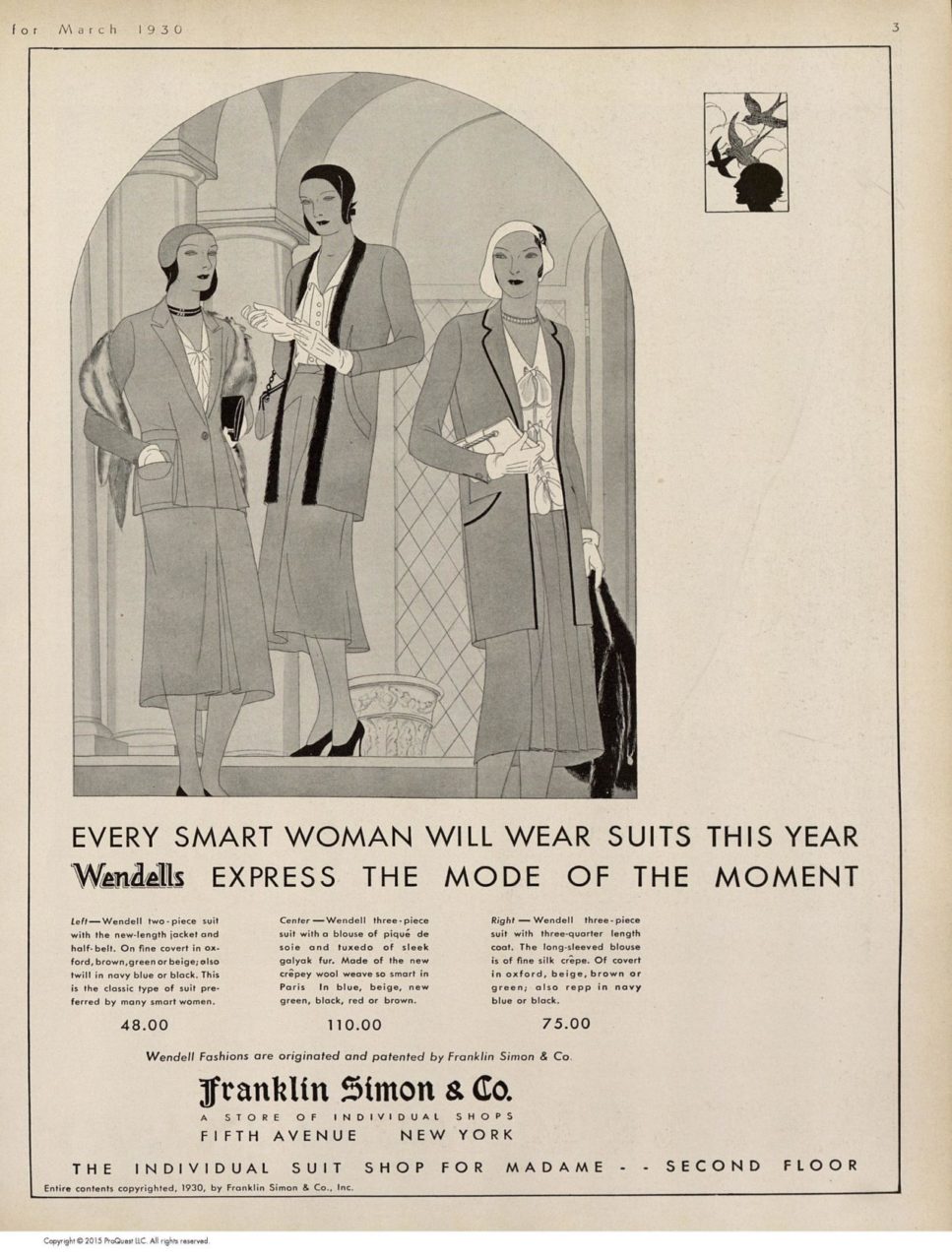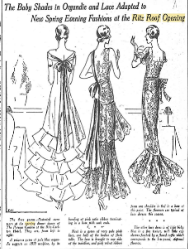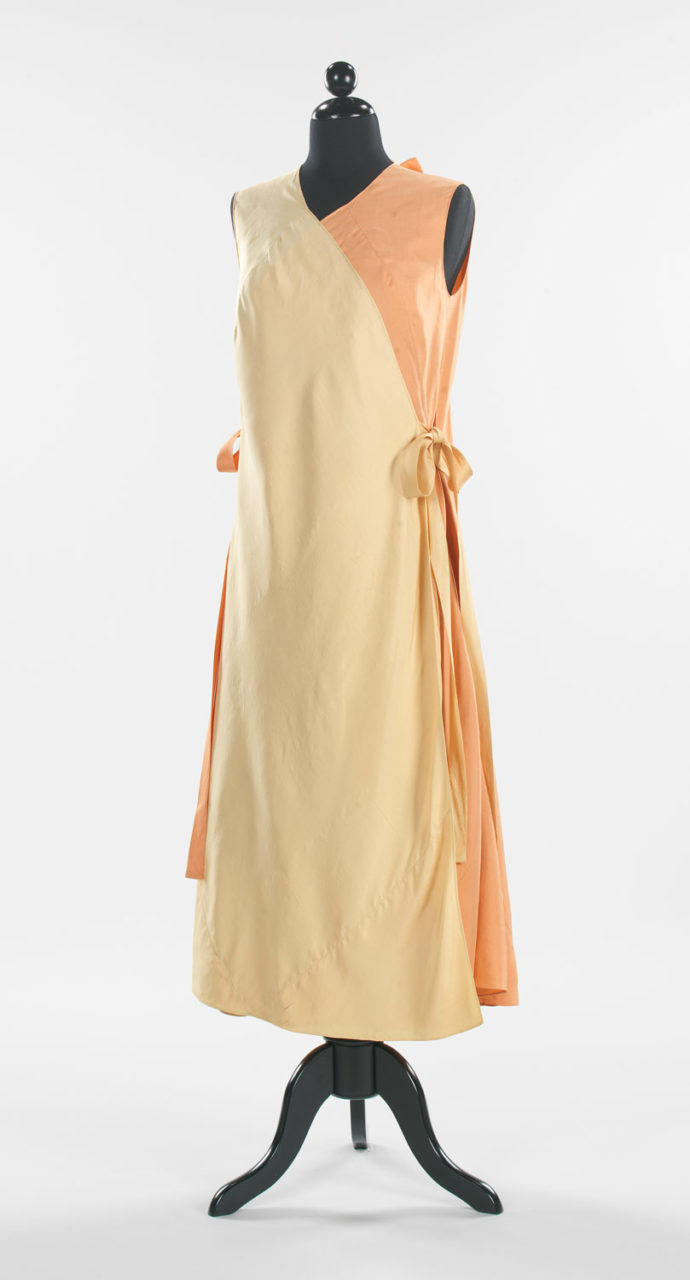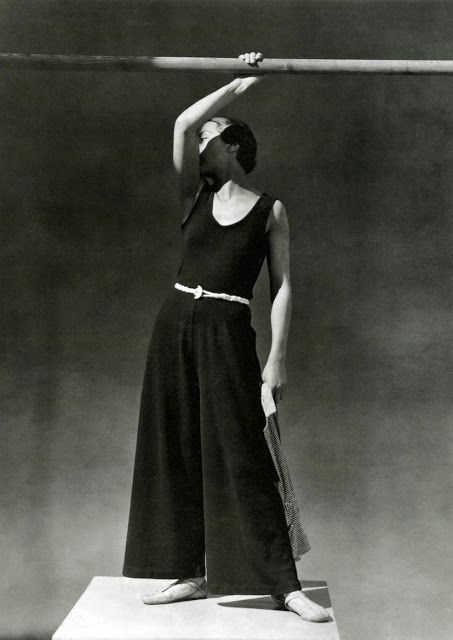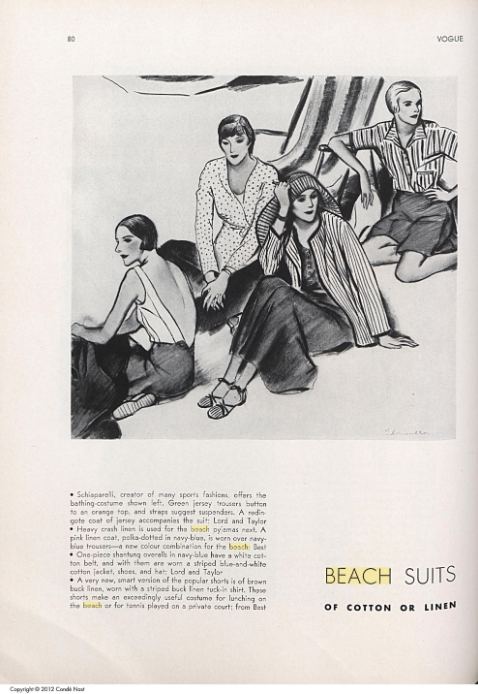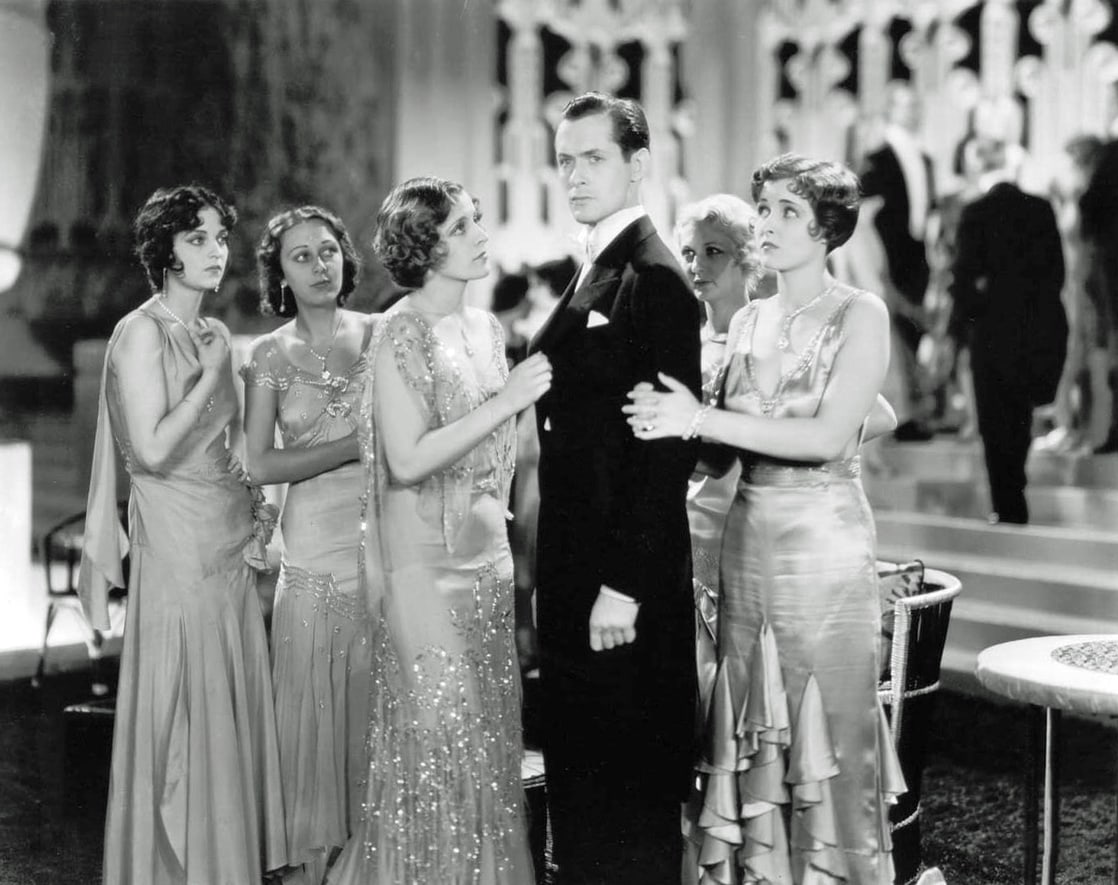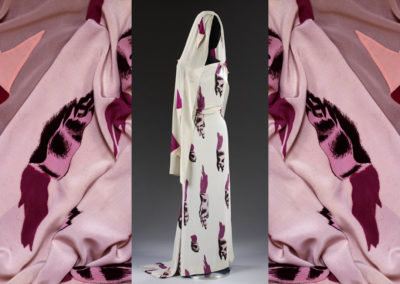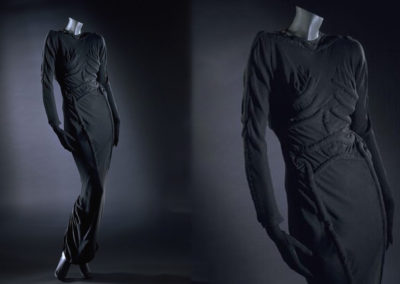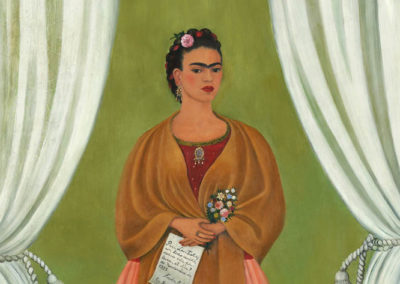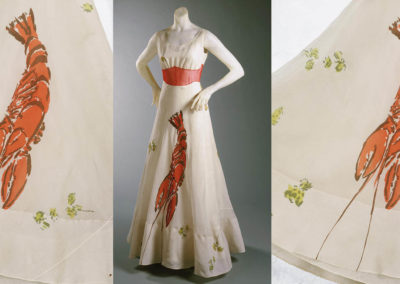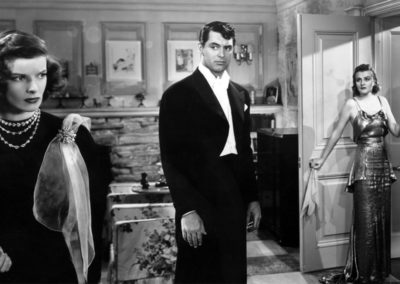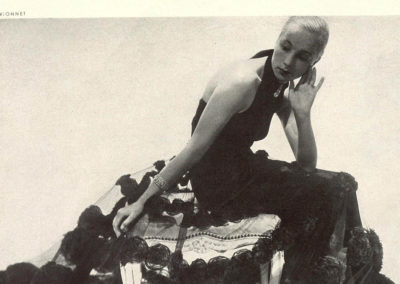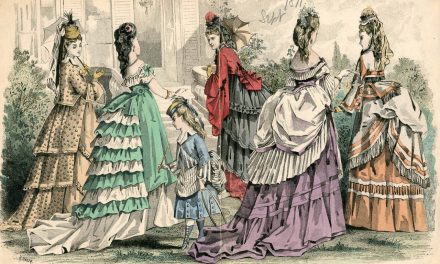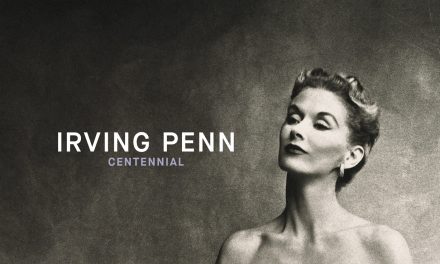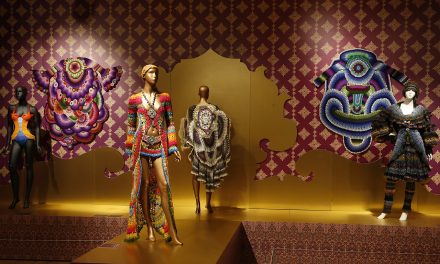OVERVIEW
1930 was a transitional year. Not yet at the height of glamour reached later in the decade, designers’ 1930 collections moved away from the flapper’s boxy shape in an attempt to define the look of the modern woman who must navigate through the Great Depression.
Womenswear
The year 1930 had many trends; some that lasted throughout the decade, and some that only lasted a season. This creative explosion was driven by the need of an entire new look that could survive the Great Depression. Designers were earnestly moving away from the 1920s look. There was a push towards more femininity in fashion by 1930. An ad for Armand cold cream in American Vogue (June) proclaims: “Boys will be boys as usual, but girls will be girls again, this summer!” (Fig. 1). Cameron Silver and Rebecca DiLiberto write in their book Decades that:
“Culturally, the 1930s were like a study in plate tectonics. The earth settled and shifted as it shouldered the aftershocks of the First World War, the stock market crash of 1929, and all the social-convention blasting that had taken place in the 1920s.” (76)
This unsteady feeling can definitely be seen in the fashions of 1930. Both day and evening wear strive for an elongated body, with a slight emphasis at the waist. Daytime hemlines gradually lowered as the year progressed. At the beginning of the year, they were at about the knee. By the end of the year, most sat at about mid-calf, with some daring designs falling just above the ankle (Fig. 2). Evening wear, too saw gowns lengthening, but with much more variance throughout the year.
Fig. 1 - Advertisement for Armand cosmetics. Vogue, vol. 75, no. 12 (June 7, 1930): 125. Source: Vogue Archive
Fig. 2 - Schiaparelli, Emma Maloof, and Selmay. "Raphsodies in Black" feature in Vogue, vol. 76, no. 13, (Dec 22, 1930): 37. Source: Vogue Archive
Fig. 3 - Barnaba. "Postures Impossible" Vogue, vol. 75, no. 12 (Jun 7, 1930): 57. Source: Vogue Archive
Fig. 4 - Adrian (American, 1903 - 1959). Joan Crawford and Ricardo Cortez in MGM's Montana Moon, 1930. Source: Pinterest
The inaugural year of the decade saw evening wear become more feminine, with frills, lace, chiffon, and drape. Compared to the 1920s, the gowns in 1930s were:
“…diaphanous concoctions trimmed with an abundance of frills, ruffles, and lace became popular with those too young, too old, or not streamlined enough to squeeze their bodies into an unforgiving lamé or satin sheath.” (Brown 292)
A June 1930 Vogue article titled “Postures Impossible” declared “1930 skims smooth and free” (Fig. 3). Early in the year, hemlines were unsteady, with designers showing calf-length, high-low, and full-length gowns (Figs. 4, 5, 6). For example, in MGM’s Montana Moon (1930) Joan Crawford wears a high-low gown designed by Adrian in the film’s climax (Fig. 4). Madeleine Vionnet designed both calf-length (Fig. 5) and floor-length gowns (Fig. 6). As the year progressed, the hemlines slowly leveled, with fewer and fewer examples of calf-length and high-low hemlines in the December issues. Gowns include more drape than in the 1920s. The gowns, often cut on the bias, are form-fitting throughout the torso and upper leg and then flare out around the mid-thigh or knee, creating yards of drape at the hem. The undisputed queen of the bias cut was Madeleine Vionnet. In an article in November 1930, Vogue proclaimed that Vionnet’s transparent gowns were “The Sensation of the Season” (Fig. 7).
Fig. 5 - Madeleine Vionnet (French, 1876 - 1975). Madeleine Vionnet evening dress, 1930. Silk georgette. New York: Museum at FIT, P83.39.7. Museum purchase. Source: MFIT
Fig. 6 - Madeleine Vionnet (French, 1876 - 1975). Marion Morehouse and unidentified model, 1930. Photo by Edward Steichen. Source: NYTimes
Fig. 7 - Madeleine Vionnet (French, 1876 - 1975). "Vionnet’s Transparent Gown—the Sensation of the Season," Vogue, vol. 76, no. 10 (Nov. 10, 1930): 54. Photo by Hoyningen-Huené. Source: Vogue Archive
Silk chiffon was used in both day and evening wear, as in this Chanel design worn at the races (Fig. 8). An article in Women’s Wear Daily (June 25) dedicated to silks declares that “Crepe roma, flat chiffon, and Canton crepe are cited by the Wollman Silk Corp. as the most important plain fabrics for early fall” (2). A report on French fashion in Harper’s Bazaar’s April 1930 issue shows that many designers incorporated silk chiffon in both their day and evening wear looks (175-188). Printed chiffons utilized large motifs, usually a floral or abstract design (Figs. 9, 10).
Fig. 8 - Coco Chanel (French, 1883 - 1971). "Toilette de Marcelle Landowska," Les Modes, vol. 30, no. 315 (August 1930):17. Photo by Séeberger Frères. Source: BNF
Fig. 9 - Ed. Edna Woolman Chase. "Seven Silks that Every Woman Will Want". Vogue, vol. 75, no. 3, (Feb 1, 1930): 75. Source: Vogue Archive
Fig. 10 - Ed. Edna Woolman Chase. "French Fabrics," Vogue, vol. 75, no. 3 (Feb. 1, 1930): 69. Source: Vogue Archive
Not all daywear incorporated light fabrics such as chiffon. A lot of women’s fashion for day took inspiration from men’s suiting. Skirt suits were inspired by menswear but with more feminine touches, such as fur trim, contrast piping, pleats/tucks, and geometric seaming; a great example can be seen in the German version of Greta Garbo’s first “talkie” Anna Christie (Fig. 11). The waist finally moved back up to its natural position, creating a more feminine silhouette (Fig. 12). Summer suits, as seen in Vogue’s June 21 edition use printed silk textiles to allow for more breathable wear during the summer (Fig. 13). “Every smart woman will wear suits this year” declared and advertisement from Franklin Simon & Co. (Fig. 14). A Women’s Wear Daily article (May 1930), “Suits Register at Ritz Roof Opening in Philadelphia: Smart Lunchers at Fashionable Hotel Roof Garden Choose Soft Straws Matching Color of Costume,” discussed women’s suiting at a social event at the Ritz Philadelphia.
Fig. 11 - Adrian (American, 1903 - 1959). Greta Garbo in Anna Christie, 1930. Source: IMDb
Fig. 12 - Wendell Fashions. Franklin Simon & co advertisement depicting the newest look for suits, Harper's Bazaar, vol. 64, no. 2609, (Mar 1930): 3. Source: Harper's Bazaar
Fig. 13 - Hattie Carnegie and Bergdorf Goodman. "Silk Suits That Will See the Commuter Through the Day In Town," Vogue, vol. 75, no. 13 (June 21, 1930): 46-47. Source: Vogue Archive
One popular way to add a feminine touch was with bows. The trendy use of bows in fashion seems to be another way designers were trying to separate their new designs from the designs in the 1920s. Bows were used frequently in both day and evening wear. “The bow is proving to be more than a mere motif” declared an article in Vogue’s July 19th edition (Fig. 15). Indeed, many unique uses of bows can be found. Some appear around the neck, while others sit on the shoulders or hips. They can even be found on wrists! Women’s Wear Daily’s May 8th front page shows bows on three evening gowns (Fig. 16).
Fig. 14 - Advertisement for Franklin Simon & Co. Harper's Bazaar, vol. 64, no. 2609 (March 1930): 3. Source: WWD
Fig. 15 - Ed. Edna Woolman Chase. Designs for Practical Dressmaking: "The Bow Is Proving To Be More Than a Mere Motif," Vogue, vol. 76, no. 2 (Jul 19, 1930): 76. Source: Vogue Archive
Fig. 16 - The Baby Shades In Organdie And Lace Adapted To New Spring Evening Fashions At The Ritz Roof Opening. WWD, vol. 40, no. 91 (May 8, 1930): 1. Source: WWD
If a woman was lucky enough, during the winter or summer months, she could holiday in the tropics. Beachwear had not changed much since the 1920s; we still see one-piece suits with belts and modest hemlines (Fig. 17). However, there was a progression in style for what women wore when not swimming at the beach. Designer Elsa Schiaparelli was very successful early in her career designing both sportswear and beach wear. Her silk beach wrap dress (Fig. 18) is a perfect example of the innovative and creative designs found on the shores of popular vacation spots. This dress can be worn multiple ways, thanks to the imaginative use of ties.
Fig. 17 - Jean d’Ahetze and Jane Régny. Models wearing swimsuits by Jean d’Ahetze (left and center) and Jane Régny (right). Photographed Baron George Hoyningen-Huene, April 1930. Source: Pleasure Photo Room
Fig. 18 - Elsa Schiaparelli (Italian, 1890 - 1973). Beachwear, Summer 1930. Silk. New York: The Metropolitan Museum of Art, 2009.300.1336a–c. Source: The Met
Fig. 19 - Elsa Schiaparelli (Italian, 1890 - 1973). A Schiaparelli beachwear design photographed by George Hoyningen-Huene and modeled by Simone Demaria, 1930. Source: Pinterest
Pants thrived in beachwear design because the beach was one of the first locations where women could wear pants in public (Fig. 19). Despite being in the midst of the Great Depression, beach vacations were still being marketed to the readers of fashion magazines. Magazines used fashion and travel as a way for the reader to escape the harsh realities of the Great Depression by including travel ads and features dedicated to both vacationing and what to wear while on vacation. Articles from the January edition of Harper’s Bazaar, the June editions of Vogue, and the December edition of Les Modes all discuss and promote beachwear to their readers (Figs. 20, 21, 22).
Fig. 20 - Milgrim, Stewart, and Abercrombie and Fitch. "For 1930 Beaches," Harper's Bazaar, vol. 64, no. 2607 (Jan 1930): 78. Source: Harper's Bazaar
Fig. 21 - Elsa Schiaparelli (Italian, 1890 - 1973). "Fashion: Beach Suits of Cotton or Linen," Vogue, vol. 75, no. 12 (Jun 7, 1930): 80. Source: Vogue Archive
Fig. 22 - Photos Rol (French). "Costumes pour la plage," Les Modes, vol. 30, no. 319 (December 1930): 82. Source: BNF
Overall, 1930 was a varied year, reflecting the unease felt by many in the first year of the Great Depression. Leading fashion and costume designers responded to the times with innovative designs and new silhouettes, like those by Adrian in Our Blushing Brides (Fig. 23). Some trends continued throughout the decade, while others did not catch on. Designers wanted to ensure their clothes appealed to the modern woman leading to some innovative-yet-transitory designs.
Fig. 23 - Adrian (American, 1903-1959). Our Blushing Brides, 1930. Source: Listal
References:
- “Advertisement: Armand, Ltd. (Armand Company).” Vogue, Jun 07, 1930, 125, https://libproxy.fitsuny.edu:2818/docview/879181751?accountid=27253.
- “Advertisement: (Franklin Simon & Co., Inc.).” Harper’s Bazaar, 03, 1930, 3, https://libproxy.fitsuny.edu:2818/docview/1832470640?accountid=27253.
- “Breaking News of the 1930s.” PBS. Accessed April 26, 2019. https://www.pbs.org/wgbh/americanexperience/features/worlds-timeline-worlds/.
- Brown, Susan, ed. Fashion: The Definitive History of Costume and Style. New York: DK Publishing, 2012. http://www.worldcat.org/oclc/840417029.
- “Designs for Practical Dressmaking: The Bow is Proving to be More than a Mere Motif.” Vogue, Jul 19,1930, 76, https://libproxy.fitsuny.edu:2818/docview/879189891?accountid=27253.
- “Fashion: Postures Impossible in 1930.” Vogue, Jun 07, 1930, 57-57, 58, 59, https://libproxy.fitsuny.edu:2818/docview/879190966?accountid=27253.
- “Fashion: Silk Suits that Will See the Commuter through the Day in Town.” Vogue, Jun 21, 1930, 46-46, 47, https://libproxy.fitsuny.edu:2818/docview/879203759?accountid=27253.
- “Fashion: Vionnet’s transparent Gown—the sensation of the season.” (1930, Nov 10). Vogue, 76, 54.https://libproxy.fitsuny.edu:2818/docview/879193714?accountid=27253
- “Silks: Roma, Chiffon, Canton Accented by Wollman Silks.” Women’s Wear Daily, Jun 25, 1930, 1, https://libproxy.fitsuny.edu:2818/docview/1727852940?accountid=27253.
- Silver, Cameron, and Rebecca DiLiberto. Decades: A Century of Fashion. London: Bloomsbury, 2012. http://www.worldcat.org/oclc/937812993
- “Suits Register at Ritz Roof Opening in Philadelphia: Smart Lunchers at Fashionable Hotel Roof Garden Choose Soft Straws Matching Color of Costume.” Women’s Wear Daily, May 23, 1930, 3, https://libproxy.fitsuny.edu:2818/docview/1727888549?accountid=27253.
- “The Baby Shades in Organdie and Lace Adapted to New Spring Evening Fashions at the Ritz Roof Opening.” Women’s Wear Daily, May 08, 1930, 1, https://libproxy.fitsuny.edu:2818/docview/1653394512?accountid=27253.
- “THE PARIS COLLECTIONS.” Harper’s Bazaar, 04, 1930, 174-174, 176, 178, 180, 182, 184, 186, 188, https://libproxy.fitsuny.edu:2818/docview/1832474537?accountid=27253.
Historical Context
Wikipedia: 1930
Academy Award for Best Picture: All Quiet on the Western Front
Events:
- Marlene Dietrich’s first American film Morocco was released. In that film, costume designer Travis Banton put Dietrich in a men’s tuxedo for her first musical number.
- Garbo talks! Famous Swedish actress Greta Garbo’s first talking motion picture Anna Christie was released.
- Dwarf planet Pluto is discovered. Later in the year, Walt Disney introduces Pluto, Mickey Mouse’s canine companion, named after the discovery (“Breaking news…”).
- Jean Harlow’s first major roll in Howard Hugh’s Hell’s Angels makes her an overnight star, creating a “platinum blonde” sensation among fashionable women everywhere.
- The cartoon series “Looney Toons” debuts.
Primary/Period Sources
Resources for Fashion History Research
To discover primary/period sources, explore the categories below.
Have a primary source to suggest? Or a newly digitized periodical/book to announce? Contact us!
Periodicals (Digitized)
Filmography
Secondary Sources
Also see the 20th-century overview page for more research sources... or browse our Zotero library.
Online
Books/Articles

